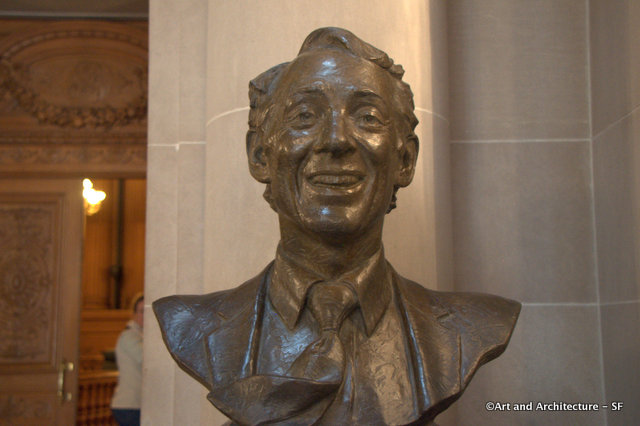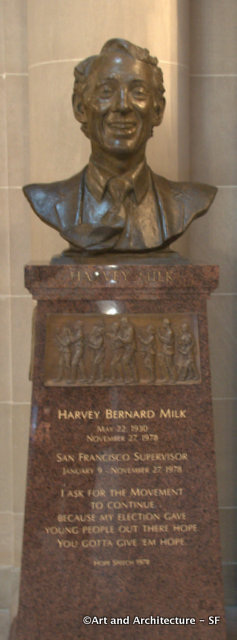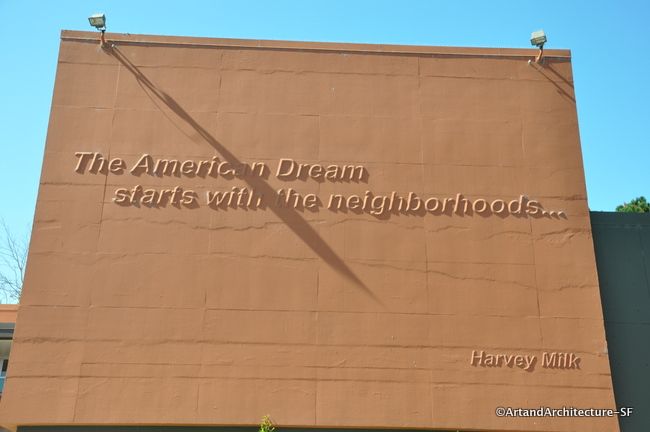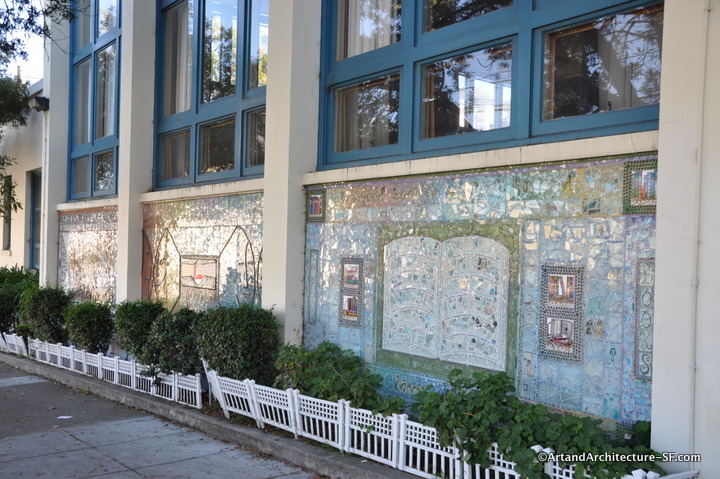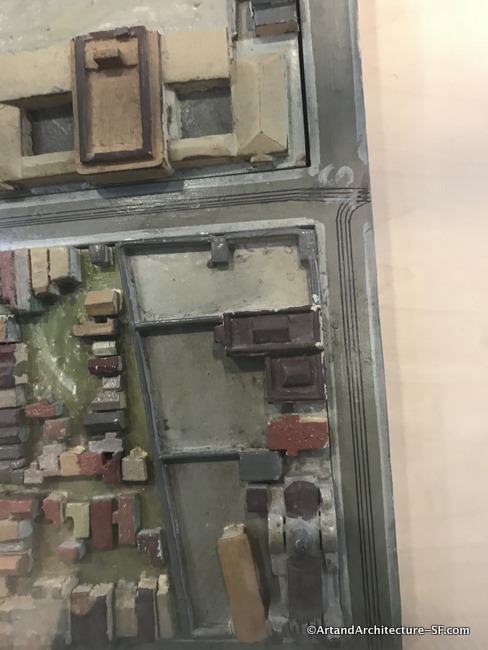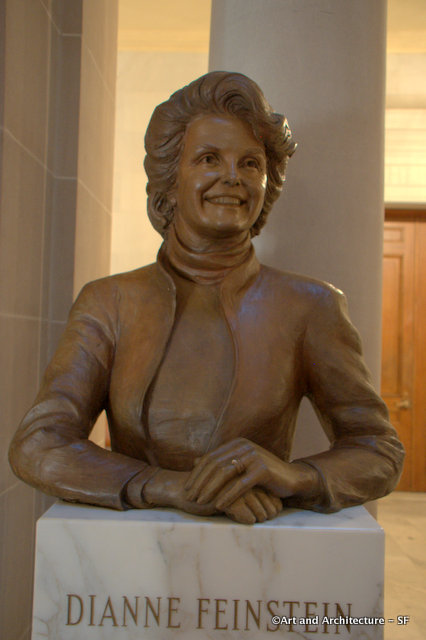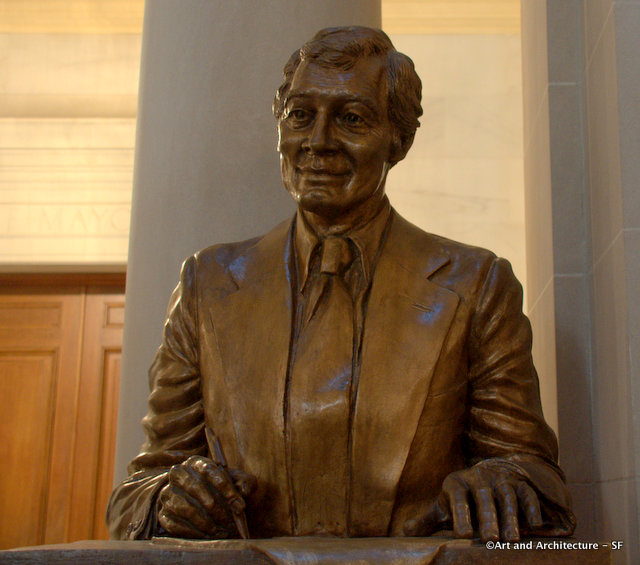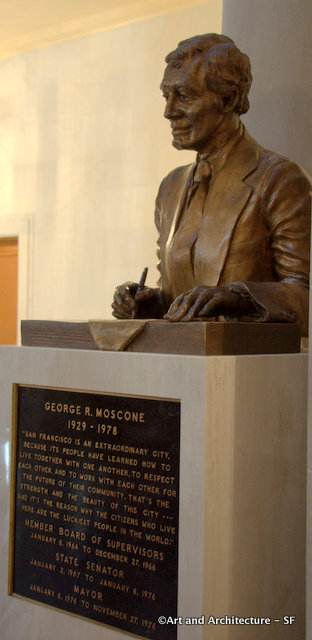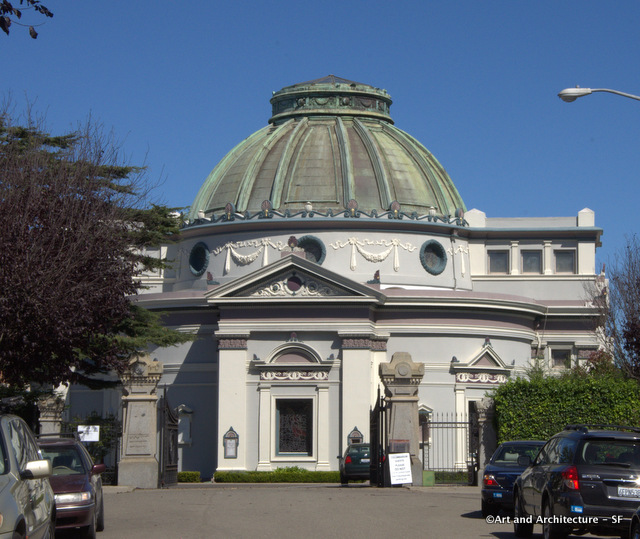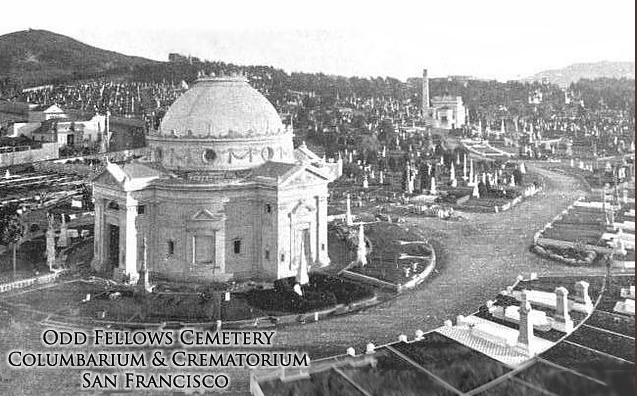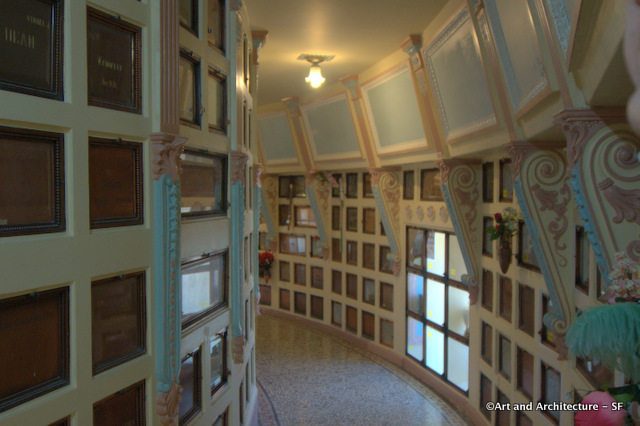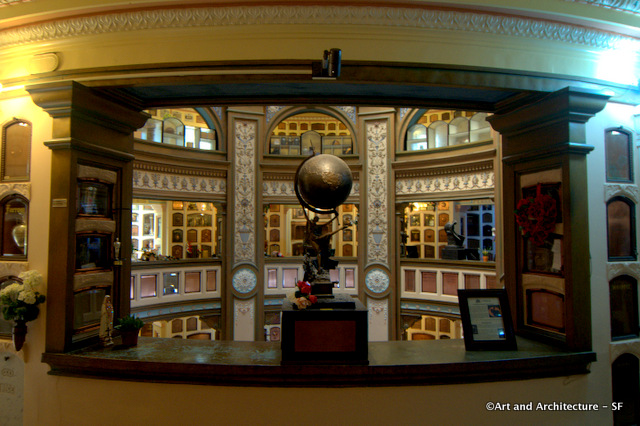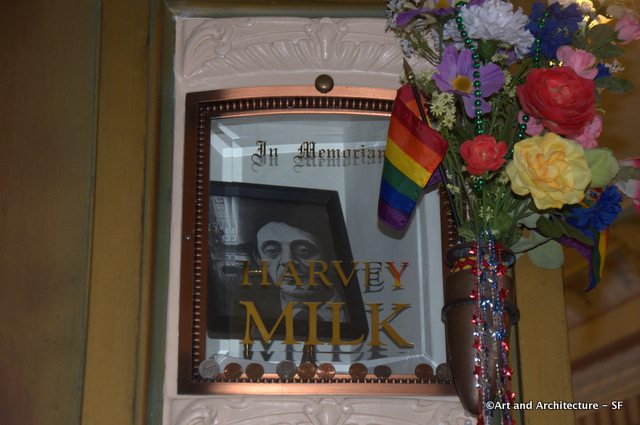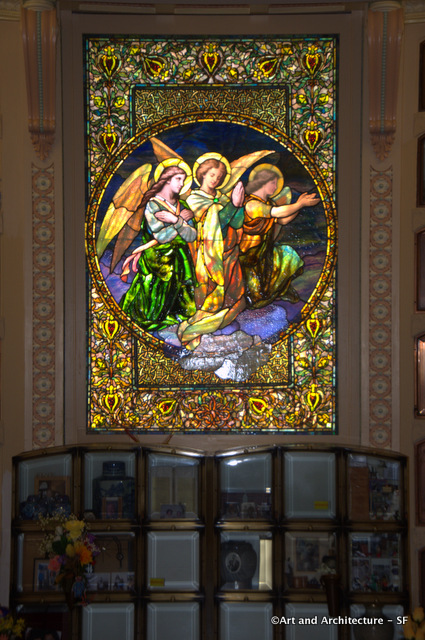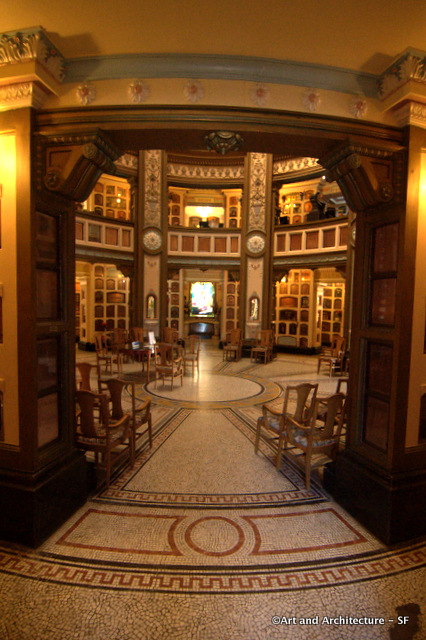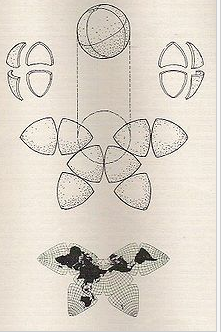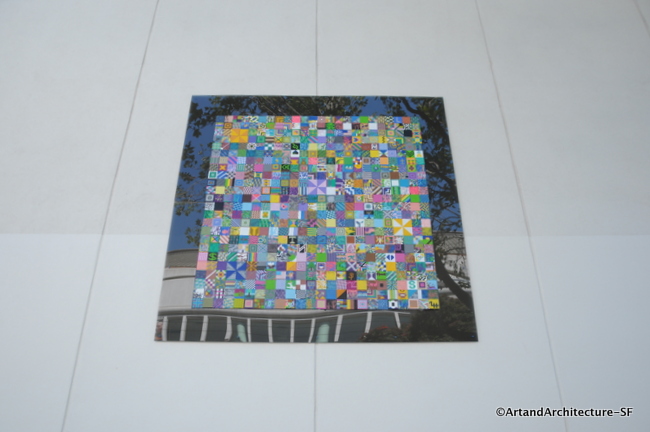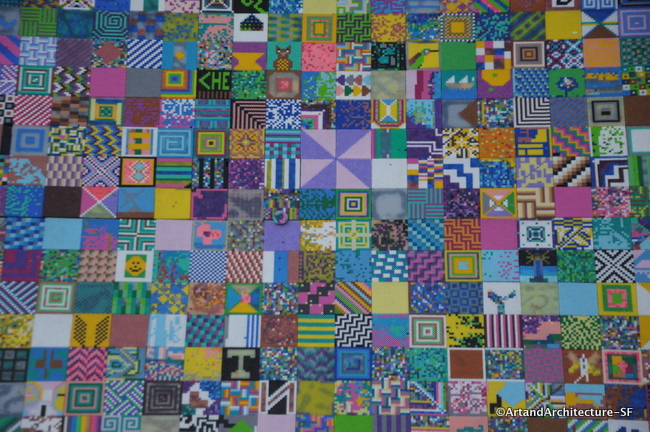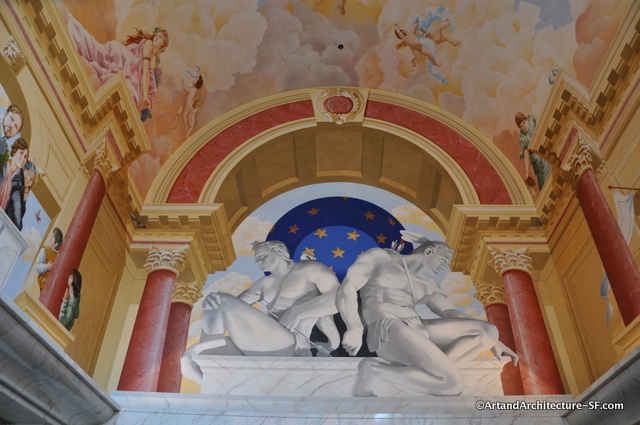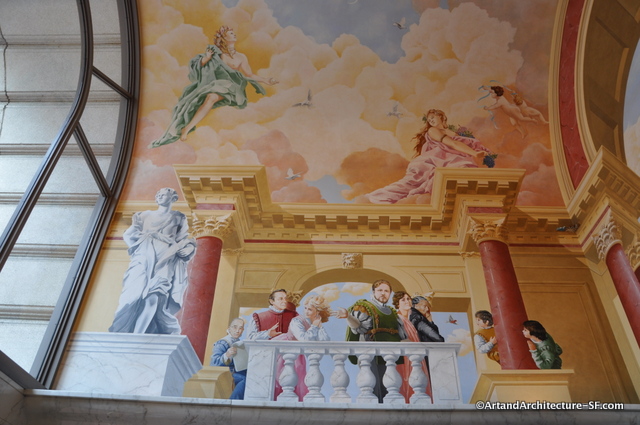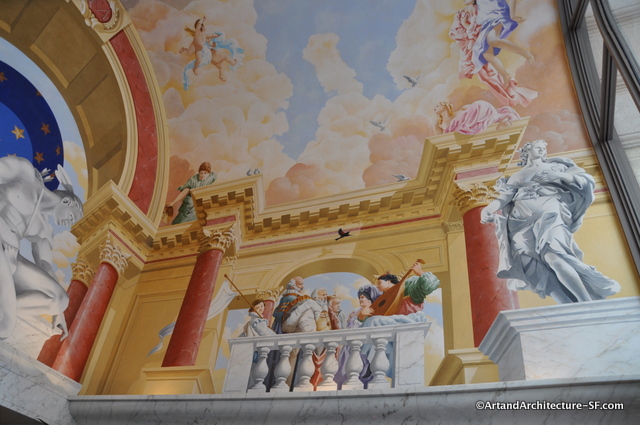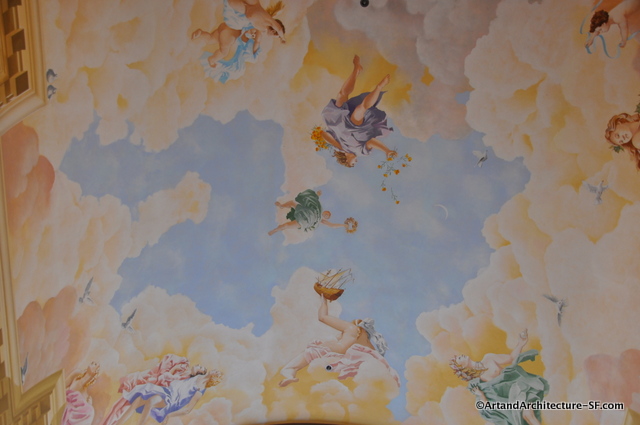City Hall
Supervisors Legislative Chamber
Civic Center
This is the only bust of a supervisor in San Francisco’s City Hall.
Harvey Milk was the first openly gay person to be elected to public office. Milk won a seat as a San Francisco supervisor in 1977. He served almost 11 months in office and was responsible for passing a stringent gay rights ordinance for the city. On November 27, 1978, Milk and Mayor George Moscone were assassinated by Dan White, another city supervisor. Milk’s election and assassination were key components of a shift in San Francisco politics.
Despite his short career in politics, Milk became an icon in San Francisco and a martyr in the gay community. In 2002, Milk was called “the most famous and most significantly open LGBT official ever elected in the United States”
This sculpture was designed by the team of Daub Firmin and Hendrickson of Berkeley at a cost of $84,000. Rob Firmin said artists tend to avoid busts that show toothy smiles, as Milk’s does. They went for it because, Firmin said, “Harvey Milk’s signature expression was a huge, amused and infectious grin.”
Part of the inspiration for the bust is from a photograph taken by Daniel Nicoletta, who worked in Milk’s Castro Street camera shop and is a co-chair of the memorial committee. His photograph caught Milk’s tie blowing in the San Francisco breeze and the bust includes that detail.
Engraved in the pedestal is a quotation from one of the audiotapes Milk recorded in the event of his assassination, which he openly predicted several times before his death. “I ask for the movement to continue because my election gave young people out there hope. You gotta give ’em hope.”
***
Eugene Daub is D & F’s principal sculptor. He attended the Pennsylvania Academy of the Fine Arts in Philadelphia, and taught there. He has been an instructor at the Scottsdale Artists’ School. He has work in the permanent collections of the Smithsonian Institute, The British Museum, Ellis Island Museum, as well as many public-sculpture installations across the United States. He is accomplished in all sculpture modes and in a wide range of more general art.
Rob Firmin, in addition to hands-on art creation, works on concepts, composition, research, model building, and project management. Firmin holds a double major in history and art history from Denison University. His career and education have ranged across: realist-figurative sculpture, the formal study of history and art history, to the invention of project management techniques, financial risk reduction, dynamic process control, modeling techniques, and software concepts and design.
Jonah Hendrickson lives in Oakland where he splits his time between sculpture and his real estate business.
